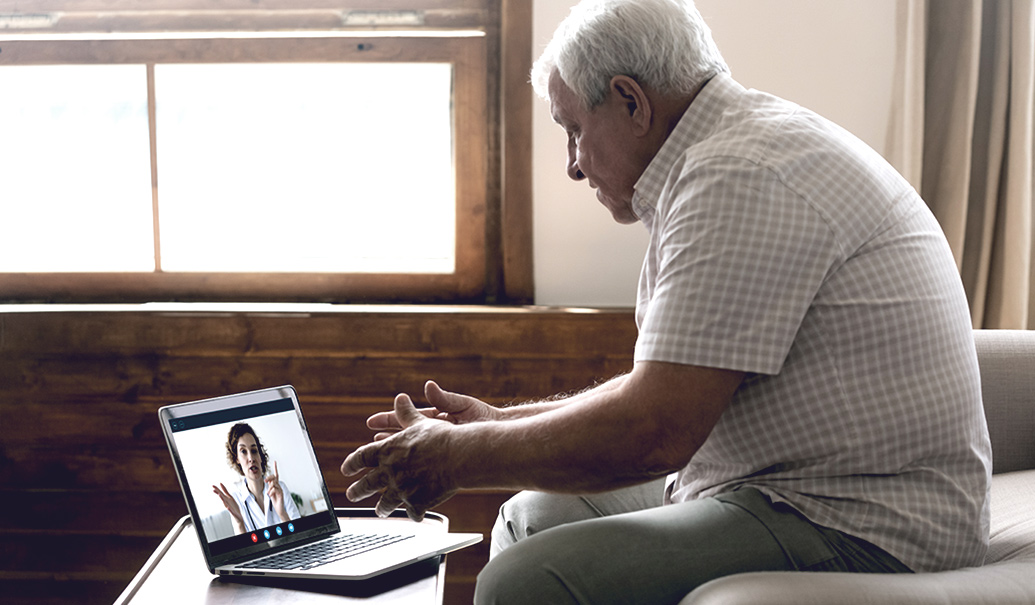COVID-19 has been a disruptive force changing how we work and engage. Across pharma, we’ve seen double-digit drops in engagement across the patient journey, including a decrease in doctor visits and fewer diagnoses. With historical unemployment, it makes sense that pharma’s initial response was focused on expanding financial assistance programs to help patients get or stay on therapy. However, pharma’s response to COVID-19 has plateaued. It’s critically important for pharma to move beyond financial assistance and redefine the “new normal” patient journey and strategic moments to meet their patient’s current unmet needs.
COVID-19 illuminated pharma’s limitations when it comes to responding in a nimble fashion. By mid-April, many brands’ websites didn’t mention COVID-19 or include any COVID-19-specific patient support programs. For those that did mention COVID-19 on their site, oftentimes they simply redirected patients to a general company-wide response that was focused on financial assistance.
Due to the heterogeneity of COVID-19 across regions, a one-size-fits-all approach will not work. Pharma will need to move beyond reactive responses focused on financial services and rethink how to deliver patient support experiences that resonate with patients in today’s new normal. While it’s unclear how these new ways of working might continue post-COVID, what’s clear is that pharma companies need to redesign the structure of their teams, systems and support programs to enable more rapid decision-making.
Pharma’s COVID-19 response highlights
We have seen a few themes emerging that showcase how response has been therapeutic-driven. Larger chronic and payer-managed therapeutic areas have been hyper-focused on financial assistance. It’s no surprise that pharma’s initial response has been focused on limiting barriers to access. With job and insurance loss being top of mind for many patients, eliminating barriers to get on therapy was key during the start of COVID-19. Early examples include campaigns from Lilly and BMS. Since April, Lilly has offered $35-per-month insulin and utilized newspapers and social media to promote their insulin affordability programs. BMS has offered medicines at no cost to BMS patients who lost their jobs or health insurance due to COVID-19.
More complex treatments or higher-risk therapeutic areas have augmented their existing services or worked with ecosystem partners to help patients stay on therapy. Logistical and transportation burdens are common issues that patients face when trying to adhere to their treatment plan. When shelter-in-place orders made it difficult for patients to find an infusion center, Ocrevus, a multiple sclerosis infusion therapy, leveraged its existing navigator program to help patients find new infusion centers or even schedule home infusions. Many patients may rely on public transportation, friends or family to get to doctor’s appointments. BMS partnered with COA/CancerCare, an oncology advocacy group, to deliver free door-to-door patient transportation to make it easy for oncology patients to get to and from their appointments. To avoid transportation altogether, some brands are working with telehealth providers to help patients get on therapy. Ubrelvy, Nurtec and Linzess have partnered with third-party telehealth systems to offer patients the option to schedule a telehealth service to get connected to a care provider.
Where pharma can focus today to meet the needs of tomorrow
While we do see some pockets of innovation, the current pace of response is not enough. Patient lives have been disrupted in new and challenging ways: Pharma will need to move from the typical reactive support program to delivering proactive patient experiences in a post-COVID-19 world.
We’ve found that patient support offerings fall within four key categories: activate, get, start and stay. Providing meaningful patient services in this new world requires consideration across these four categories to inform new solutions that build awareness and help patients get and stay on therapy.
Pharma will need to move from the typical reactive support program to delivering proactive patient experiences in a post-COVID-19 world.
Offerings within the “activate” category: Pharma companies need a better understanding of patients and how to reach them at each stage of their journey.
- Think digital: During lockdown, people have spent more time consuming social media content. Social media is an important channel to utilize to connect with your patients. If your marketing materials are delivered via a paper-based direct mail cadence, it will be critical to consider options to turn these materials into digital experiences or other ways to reduce reliance on items that are physically delivered to patients.
- Avoid generic content: Pharma can alleviate patients’ worries about starting a new therapy by providing COVID-19 therapeutic-area-specific content and FAQs.
- Build influencer networks: Taking a page from consumer brands, pharma can leverage existing patient ambassador programs to develop influencer programs. This is an opportunity to connect with your biggest fans to inform your brand strategy.
Offerings within the “get” category: Empower patients to get care “on demand” by putting HCPs at their fingertips and continue to reduce access hurdles.
- Explore pharma opportunities to utilize telehealth: Even as COVID-19 begins to stabilize, patients may opt to use telehealth or remote technologies. As noted earlier, some companies have taken an initial step to connect patients with their doctors by redirecting patients to third-party telehealth sites. Although there may be regulatory hurdles, pharma can explore how it can provide complimentary telehealth services themselves.
- Augment program enrollment strategy: If the HCP office is the major source of patient support program enrollment, it will be critical to understand how to incorporate program enrollment in a telehealth visit. Additionally, pushing patients to have direct enrollment via digital or call-center-based enrollment opportunities will be critical. Streamlining the enrollment process with a single opt-in process will make it easier for patients to utilize pharma’s suite of services.
- Continue to provide expanded patient assistance programs: Financial burdens will continue to be a hurdle for many patients. Sustained support to help patients access therapy will be important.
Offerings within the “start” category: Provide personalized and tailored outreach that anticipates the needs of patients and caregivers.
- Make the first impression count: The first-use experience and starter kit can include a call to action to schedule a complimentary virtual call with a care coordinator. This can help humanize support and ensure the patient feels connected to the brand. Care coordinators can educate the patients on other patient support programs to increase awareness and adoption.
- Ensure that call centers and nursing scripts use appropriate tone and display empathy for patient needs during this time. It’s also important to ensure that your call center representatives are prepared with answers to common questions that patients and caregivers may have surrounding COVID and disease management, and that there’s an appropriate plan for when to triage questions to medical.
- Utilize CRM to maintain contact: Pharma companies can utilize CRM technology to create a unique onboarding experience for each patient at scale. Pharma can automatically send milestone emails that are personalized to each patient and proactively reach out to patients to ensure they feel supported across their journey.
Offerings within the “stay” category: Develop a virtual community to connect patients and caregivers and provide logistical support.
- Provide patients the opportunity to connect: COVID-19 social distancing rules were necessary to reduce the spread of the virus, but it caused many patients to be isolated from their community. Pharma can offer a platform or partner with patient advocacy groups to give patients and caregivers a place to connect virtually.
- Offer financial support through advocacy partnerships: Many pharma companies have donated to large patient advocacy groups such as the Leukemia and Lymphoma Society LLS COVID-19 Patient Financial Aid Program, which gives $200 toward living expenses.
- Lifestyle and transportation support: Outside of financial assistance, pharma can partner with mental health organizations to offer complimentary mental health services and fitness organizations to offer complimentary indoor exercise classes and content. Some patients must go onsite to receive their therapy. Pharma can help provide concierge transportation services to and from medical appointments.
COVID-19 has pushed us to define new ways to deliver care and reach patients. Pharma has many opportunities to build exceptional patient support programs that marry their brand’s key attributes with the new reality of patients living with their condition.















